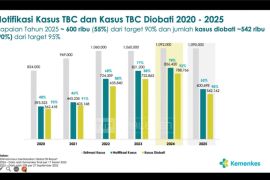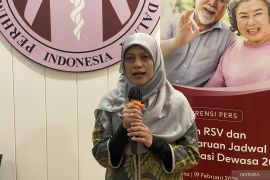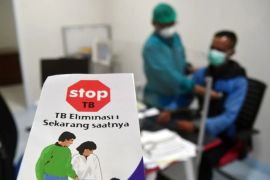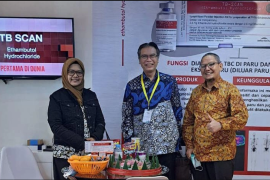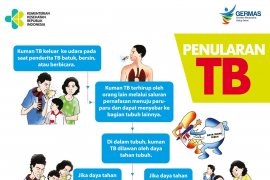"If you look at a study analyzing tuberculosis patients, it shows that 24 percent of the people with symptoms had visited health service facilities," Tarmizi noted here on Wednesday.
Hence, it translates to the fact that only 24 percent of the people, who recognized the TB symptoms they experienced, had visited health facilities for a medical check-up.
The same study also cited that 74 percent of the people sought treatment at private health facilities, both formal and informal health providers.
"We know that the diagnostic capacity at formal private health facilities is still very limited," she remarked.
It also found that two percent of the people, with TB symptoms, had sought treatment at general practitioners and clinics, while the remaining 59 percent headed to hospitals.
Hence, the government was facing difficulties in tracking TB cases in Indonesia.
Based on case tracking conducted in 2020, Indonesia had only some 350 thousand TB cases as compared to 560 thousand cases in 2019.
"In fact, we have done the homework (PR), as 840 thousand TB cases are estimated to occur every year in Indonesia," she remarked.
Such a situation has compelled the Ministry of Health to conduct active tracing in the community. Meanwhile, health protocols should be followed while tracking TB cases during the pandemic.
"Only 24 percent of the people will access health services for TB. Coupled with the pandemic, of course, this number is decreasing since they might be apprehensive of visiting health facilities," she remarked.
"From the results of the global TB 2020 report, Indonesia is among the three countries, with the largest TB burden in the world. Indonesia needs comprehensive handling to eliminate TB as targeted by 2030," she added.
Related news: Indonesia committed to simultaneously handling TB and COVID-19
Related news: Tuberculosis reduces productivity levels across age groups: VP EDITED BY INE
Translator: Andi Firdaus, Fardah
Editor: Suharto
Copyright © ANTARA 2021


